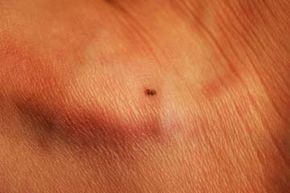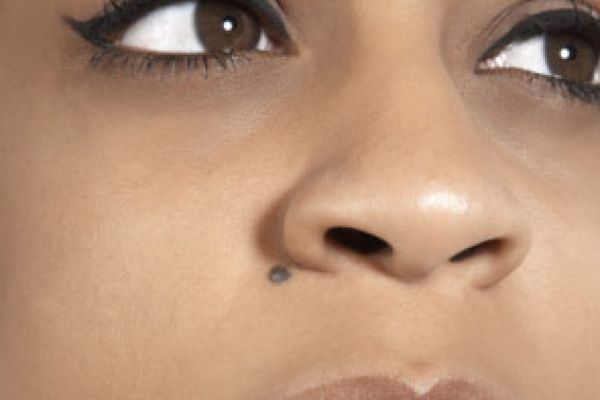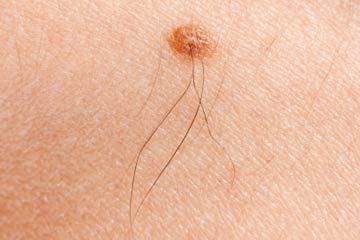If you had to guess what type of cancer only accounts for 5 percent of skin cancer cases yet leads to a large number of cancer-related deaths, what would you say? If you guessed melanoma, then you're right [source: ACS]. Melanoma can look just like a mole, but the cells inside a melanoma are cancerous and can spread throughout your body.
Knowing a little about your skin will help you understand how to spot a cancerous mole. Your skin has several layers. The epidermis, or top layer, is very thin, but it has a big job; it protects the other layers of skin. Inside the epidermis are cells called melanocytes, which make melanin, a colored chemical that protects your skin. Melanin is the part of your skin that tans when you are in the sun. Normally, melanocytes are spread throughout the epidermis. Sometimes, however, small groups of melanocytes will group together forming a mole. Although it's not known exactly why moles form, some scientists think DNA might affect this. [ACS].
Advertisement
Most people have moles. In fact, most Americans have between 10 and 40 of them but perhaps don't even know that they have that many [source: MedlinePlus]. Common moles are less than ¼ inch (6.35 mm) in diameter and can develop from birth to adulthood [source: Mayo Clinic]. Sometimes hormonal changes -- like during puberty or pregnancy -- can cause new moles to appear or cause existing moles to change size or color.
Melanoma is a cancer that begins in a melanocyte. It often looks like a mole but is not a mole. If it is diagnosed early, patients have a high survival rate [source: ACS]. Early diagnosis is possible, especially if you maintain a schedule of frequent self-exams and regular doctor visits. The trick is in knowing what to look for.
Read on to learn how to spot a cancerous mole and find out what type of mole increases the likelihood of developing this deadly cancer.
Advertisement


